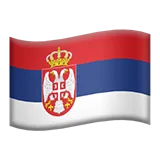JetStyle’s motion design team creates video products for businesses. Explainer videos are one of their favorite genres: they help promote a complex product to a wider audience. Apart from that, they entertain and educate.
We collected the most frequent questions our clients have when they address us for explainer video development. Anton Rusetski, the motion design team lead, answers in detail:
1. What’s the typical process of creating an explainer video?
Anton: It starts with defining the goals of the future video. We ask our client to describe the “good result” in their terms. Depending on the campaign goals, we choose visual means, script, timelines and promotion tools.
Generally, the process looks like this:
Preproduction stage (strategy development, script creation, visual language, animatic development) → production stage (3D development, draft animation, editing) → post production stage (graphics, sound design, final editing, publishing).
2. How do you ensure that the complex features of a product are effectively conveyed in the video?
Anton: Even if the product is complicated, it’s still possible to outline its core logic. Our creative job as creators is to find simple metaphors; interviews with the product experts help with that. Everything can be explained in simple terms, including complicated terminology, if you stick to the “simple-to-complex” approach. And know your audience well, of course.
3. What strategies do you employ to maintain viewer engagement throughout the video, particularly when explaining technical details?
Anton: The choice of a visual language is key. We are well aware that today the audience is overwhelmed with video content. “Tiktok brain” influences the current content consumption trends, so we do our best to overcome this difficulty. We create aesthetically pleasing videos, experiment with the density of the information, and always make sure we simplify everything that needs to be universally understood.
4. What’s your approach to scripting for an explainer video?
Anton: Let me use an example to illustrate our approach to scripting.
We created an explainer video for Orion Pharma, a global pharmaceutical company. They promoted their new product Lactagel among the professional medical workers. Our target audience was doctors, so our script had to be native. We had medical experts proofread the script and added related research data – as a result, the script was relevant to our narrow professional audience niche. Look at the final result:
When we work with a broader audience, the rule of thumb goes like this: the script should convey information in the most concise and clear way.
Together with the script, we prepare the animatic: it’s perfect for visualizing the core states of the narration. If we’re working on a Youtube pre roll video like the one we made for Microsoft, the animatic will have just 3 core frames. A more complex video will require a more detailed animatic.
5. What options do you offer for animation styles and visual effects, and how do you choose the most suitable style for a product?
Anton: There are several core factors worth considering:
- The client’s brand identity and what elements of it we need to include in the video.
- Our understanding of the audience’s expectations: are we planning to meet them or disrupt them?
- Perception of video content. Is a darker or a lighter theme better for this video? Should our characters look more friendly or professional?
For instance, if we’re working with a serious fintech product, we’re looking for elegant and reserved stylistics.
Or, for example, digital marketing is a more informal industry, so we are free to use brighter colors and easy-going stylistics. Check out our explainer video about Google’s EEAT ranging factors:
The video contains lively emotional graphics – we needed to make the video visually appealing, despite the pretty formal topic.
6. How do you handle revisions and feedback throughout the production process?
This is the key element of our communication with the client’s team. To achieve the perfect result, we have to be on the same page. The decisions we make are based primarily on what’s appropriate to the final goal, not only on what we like from the visual point of view.
Another thing we keep in mind is the timing for feedback processing. We care about cost-efficiency of the project, so we encourage our clients to give as much feedback as they can at the earliest production stages. Later changes are always more expensive.
We value our clients’ creative insights: they know their audience best, so we’re happy to use their expertise for the benefit of the final product.
7. What is the typical timeline for creating an explainer video?
There’s never one turnkey solution: the timeline will depend on the goal and the initial state of the video. For example, it takes our copywriter team around 2 work weeks to create a script from scratch, but it will be a different timeline if the client comes with their drafted version of the script. We usually figure the timing out during our first calls with the client.
8. How do you maintain cost-efficiency of the production process?
Sometimes we can suggest purchasing ready-made stock materials instead of creating them from scratch. If the video requires footage of specific locations, events, or scenarios that are impractical or costly to recreate, stock footage is a convenient solution.
Also, there are costs associated with voiceover, music or fonts purchase. We can replace some of these functions with AI. Data gathering, music and voice overs are easily created in neural networks; at JetStyle, we have a lot of experience with the market’s best AI tools. They save both time and money. We write about AI in our blog.
***
If you have other questions about explainer production that we haven’t covered, let us know! We’re happy to chat and discuss whether explainers can help you solve a business task. orders@jet.style








